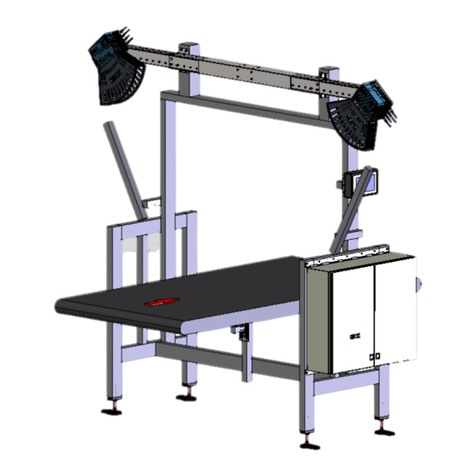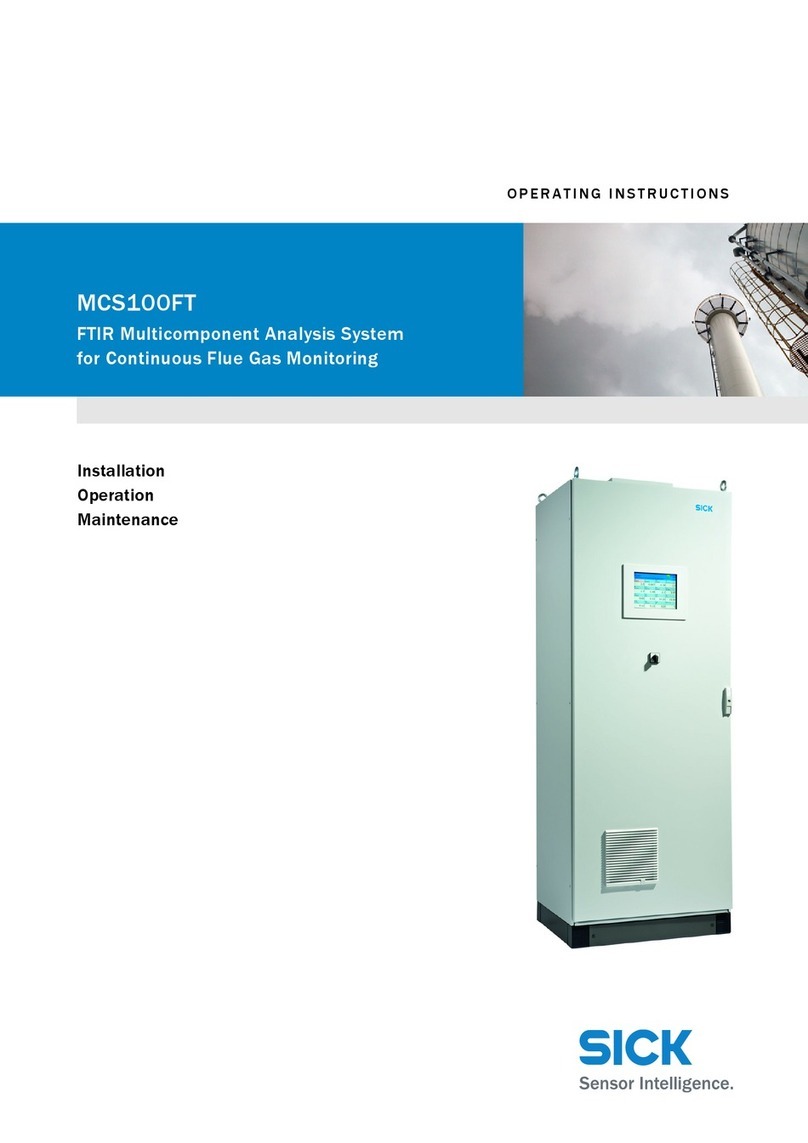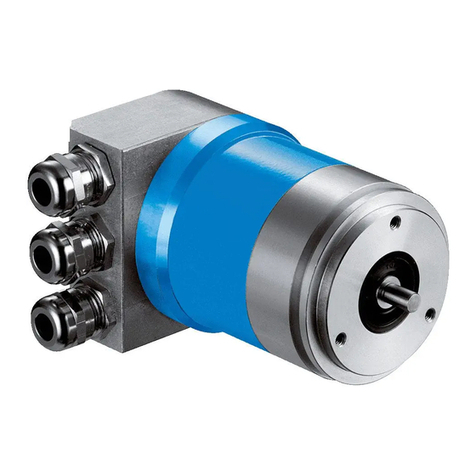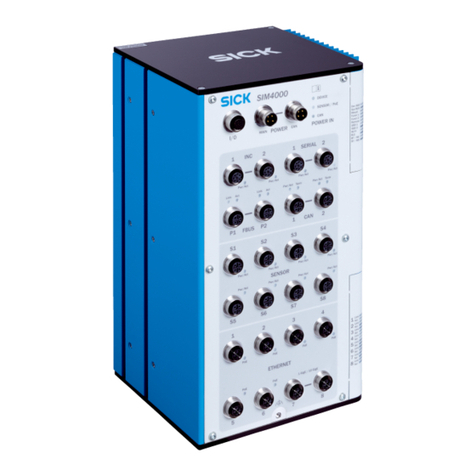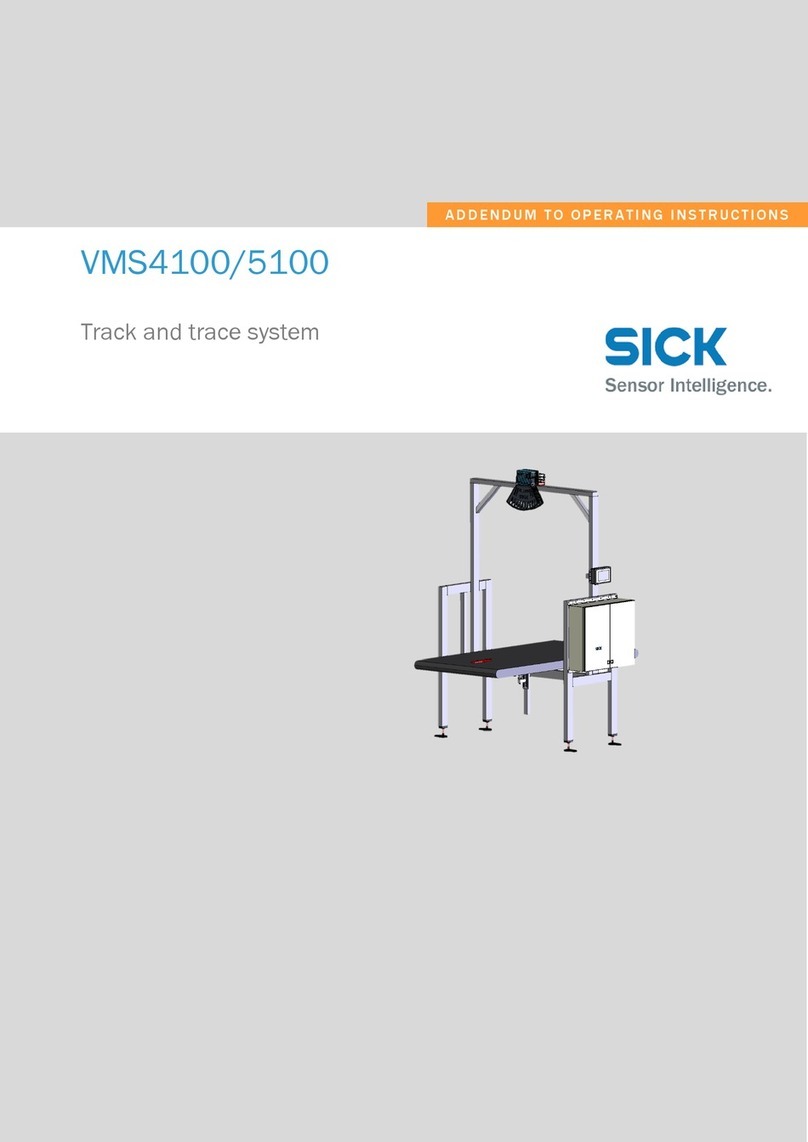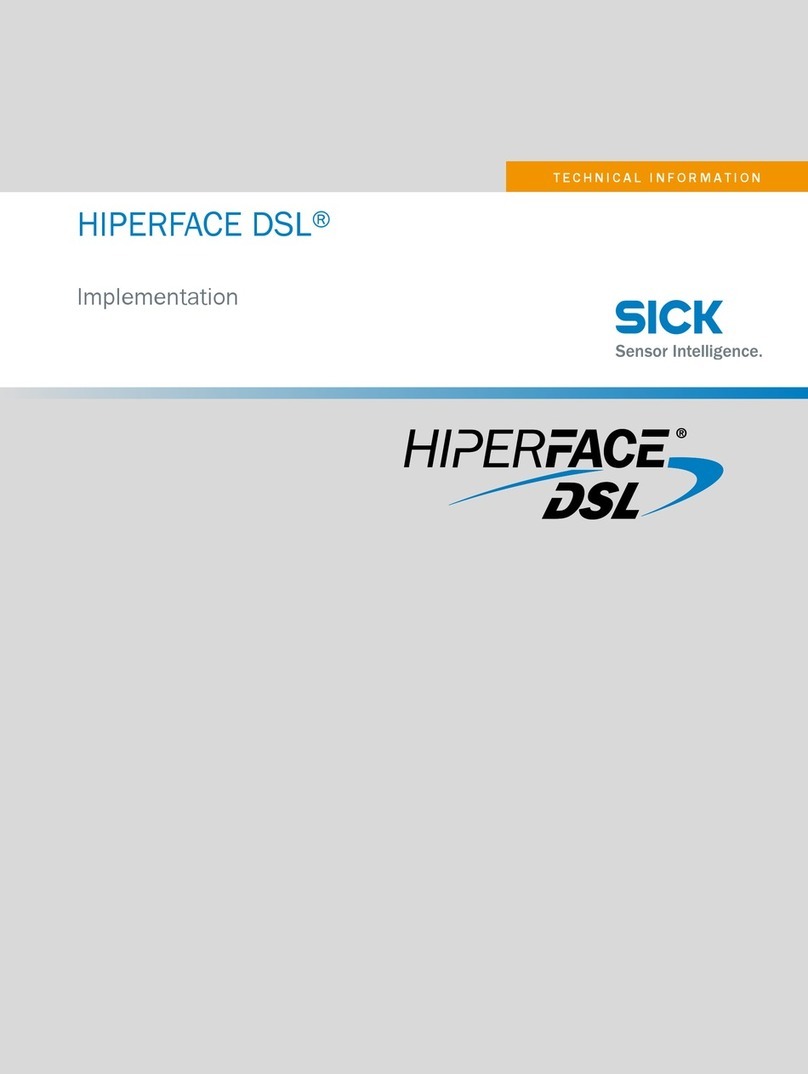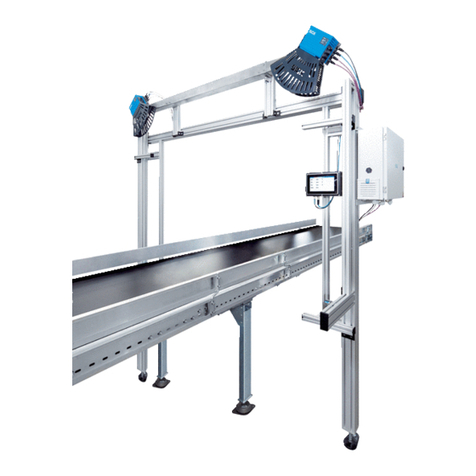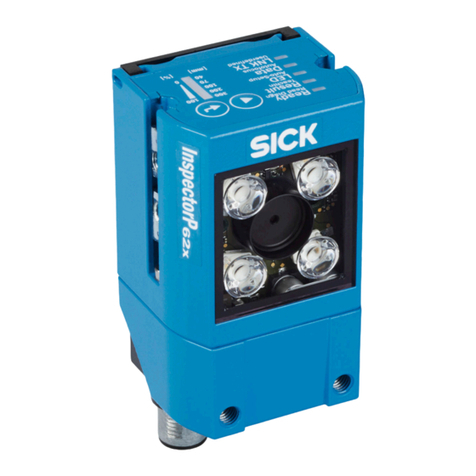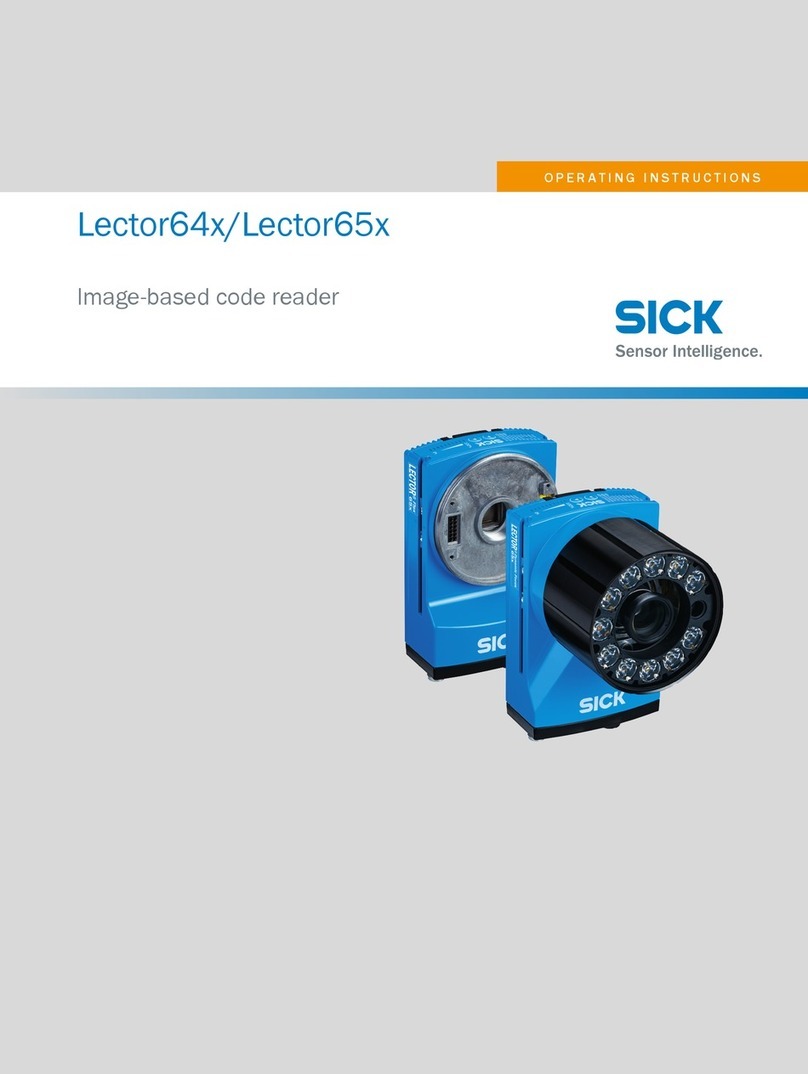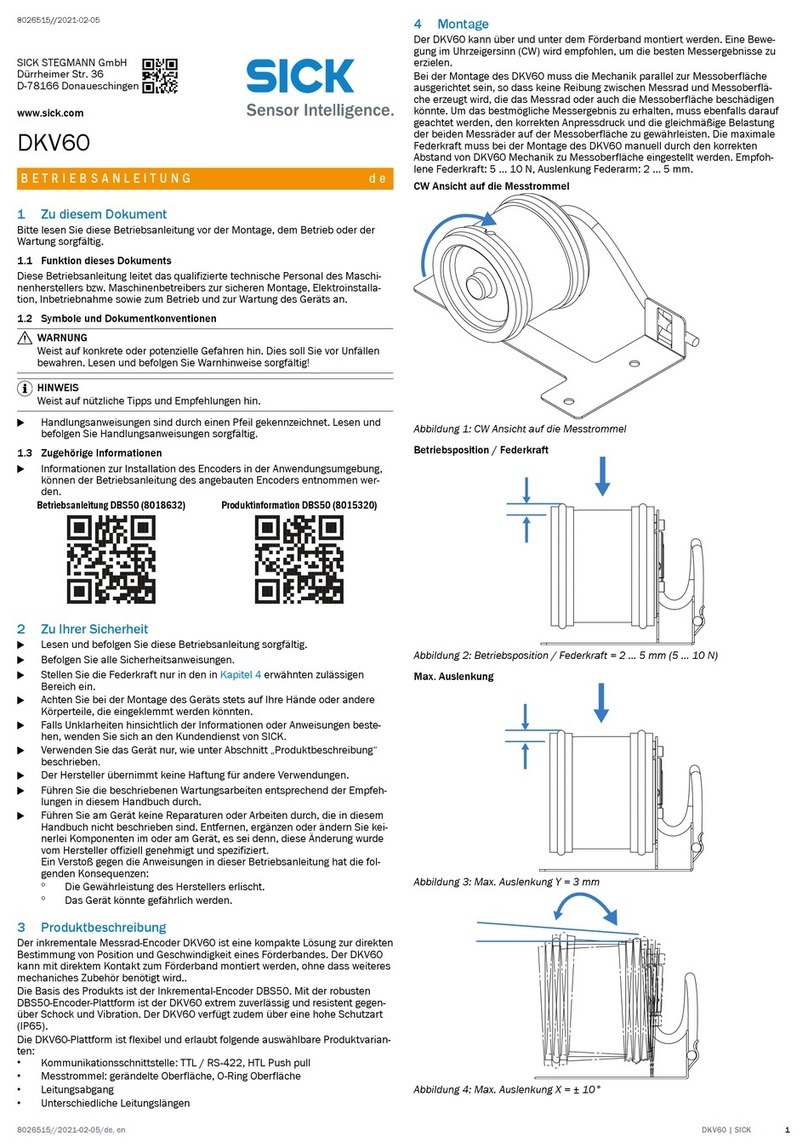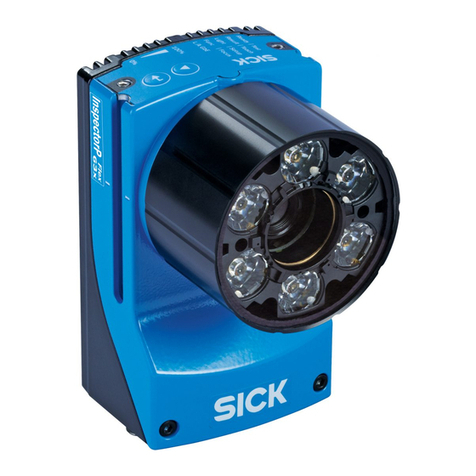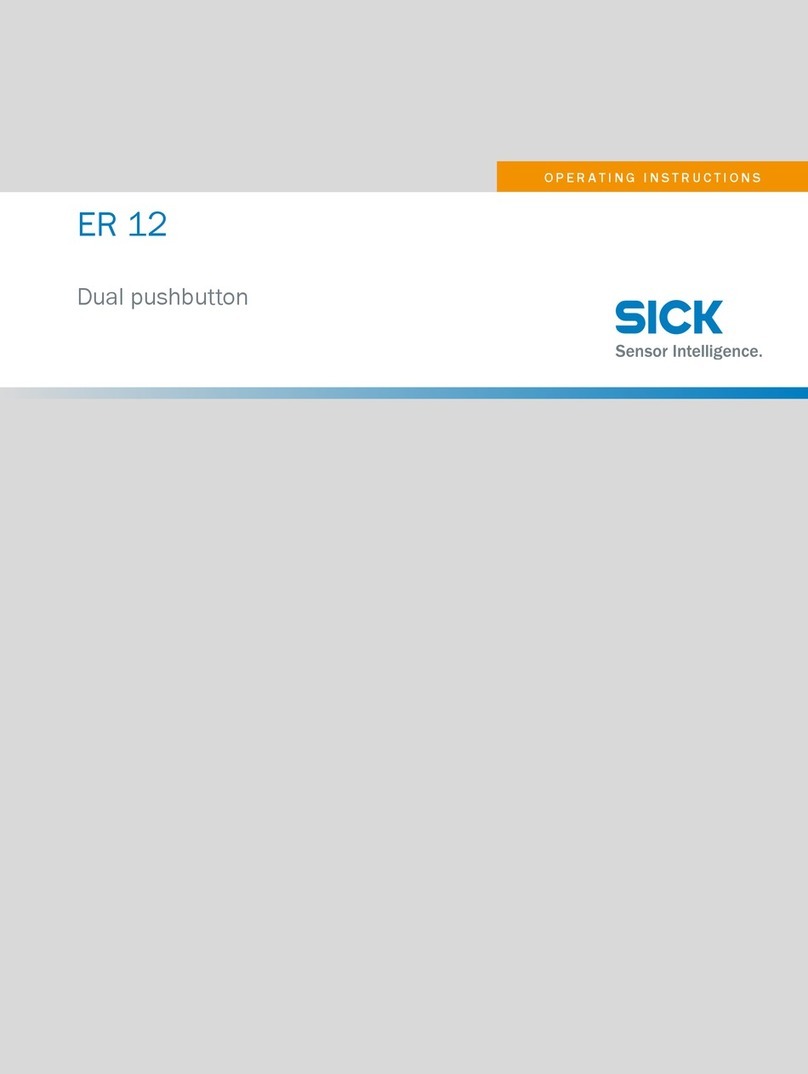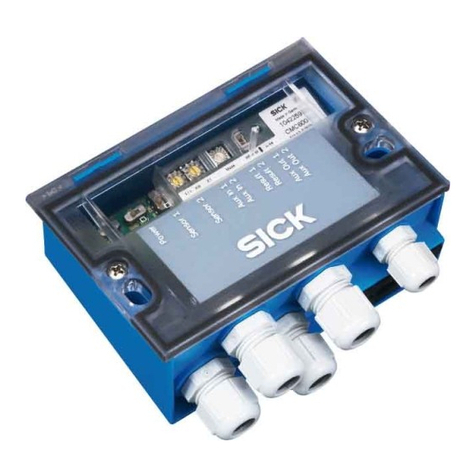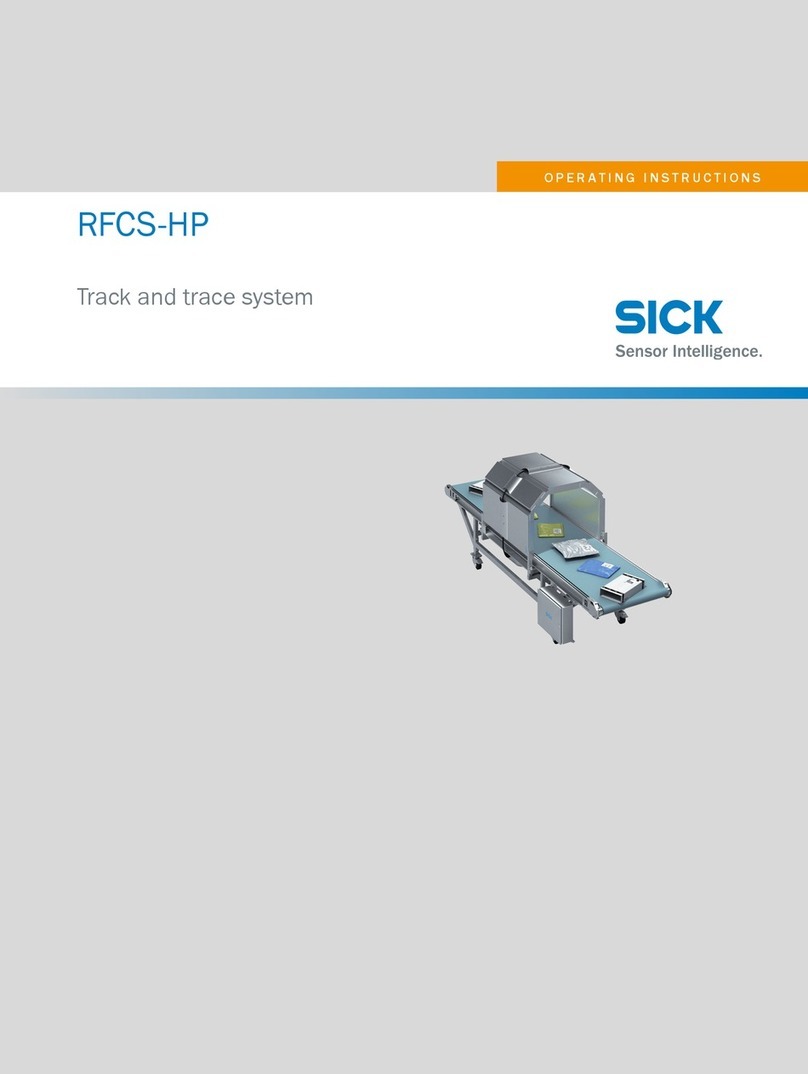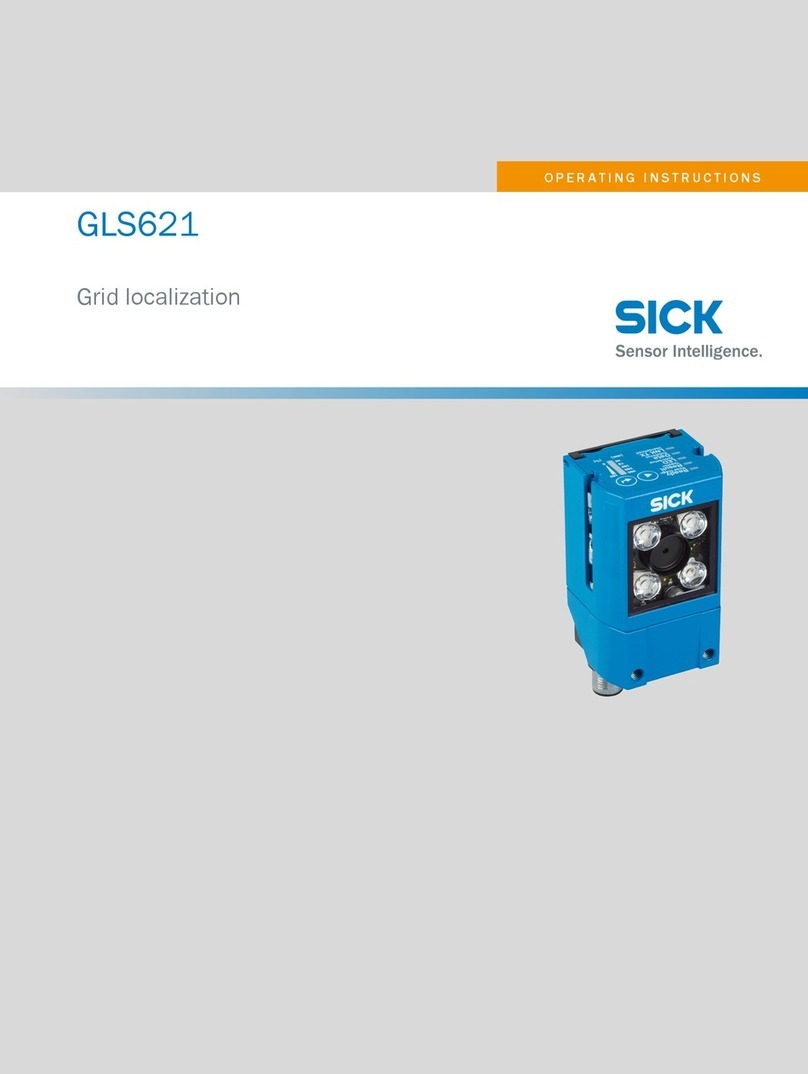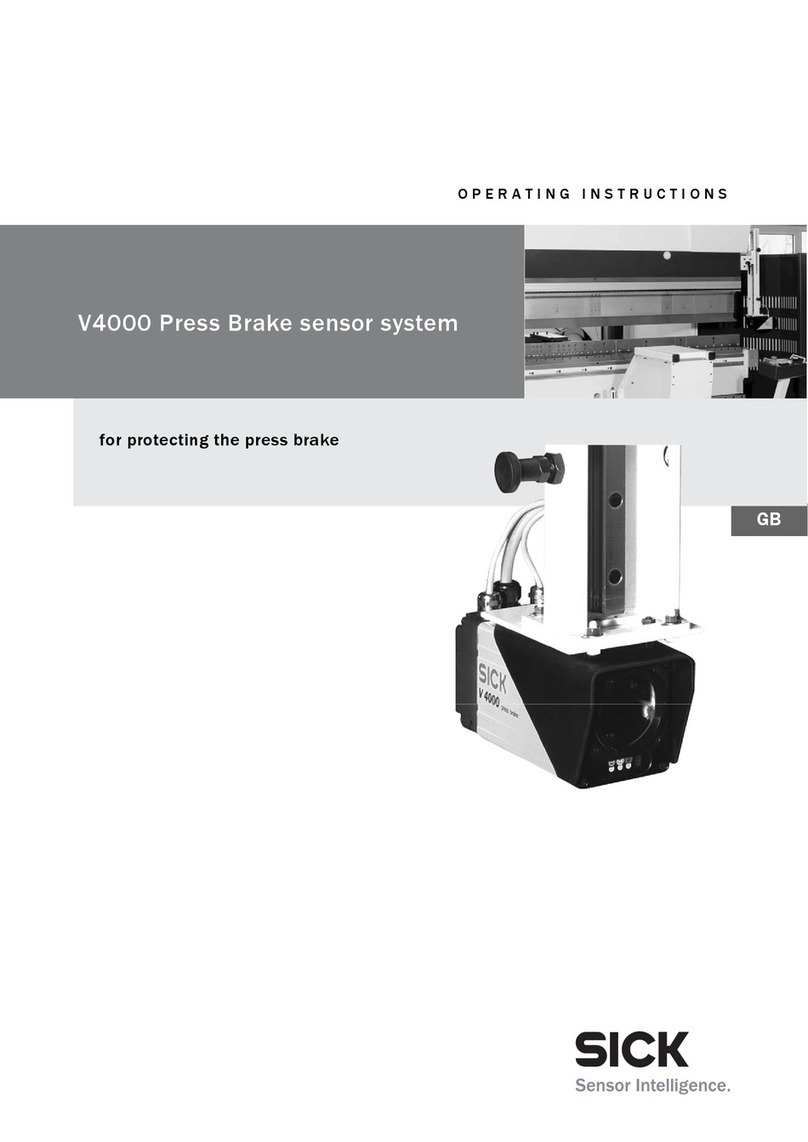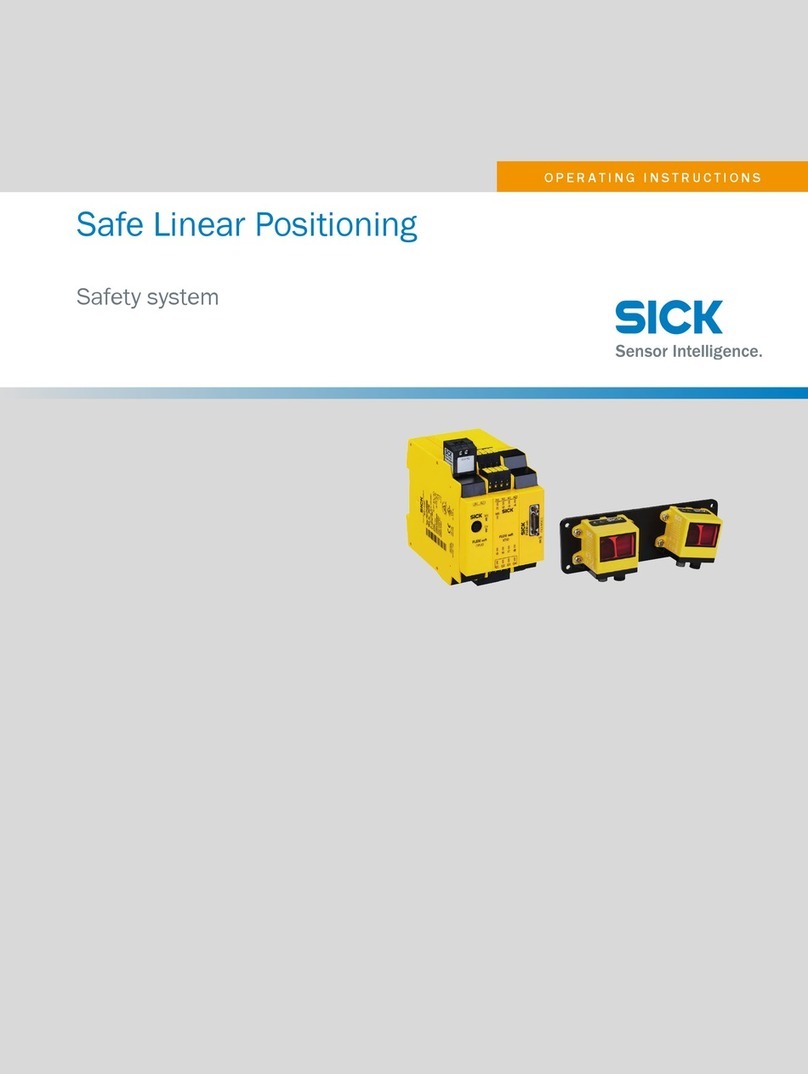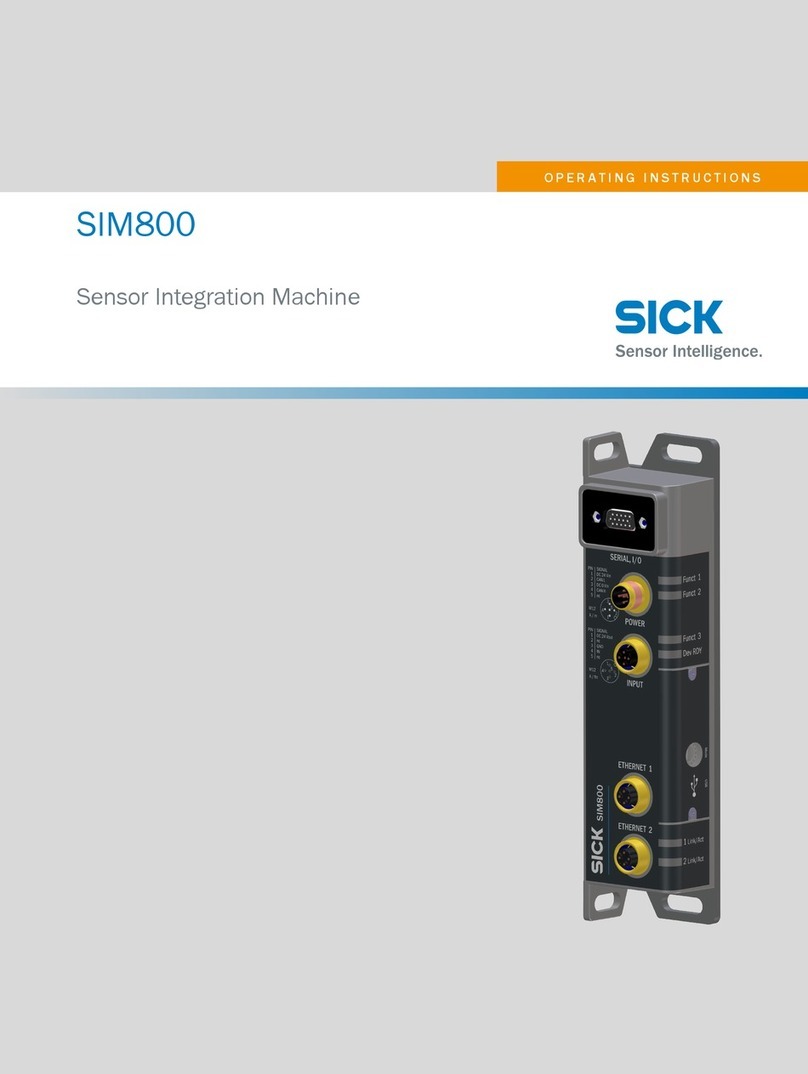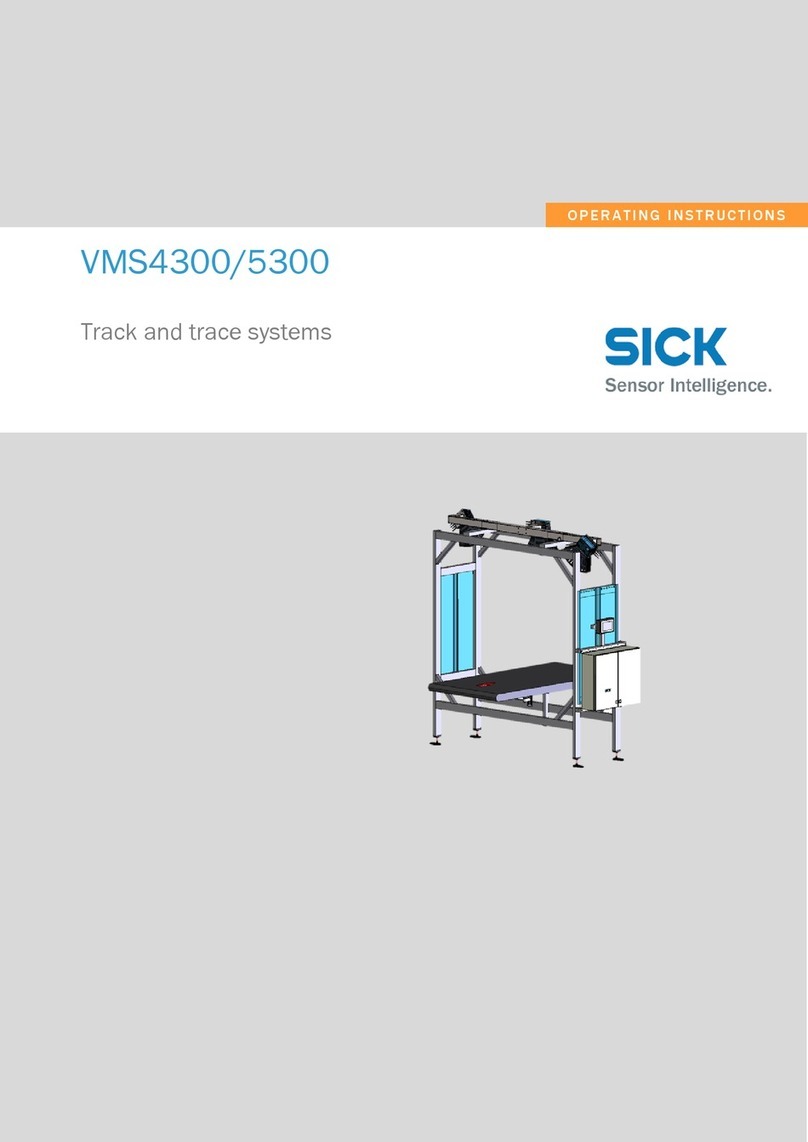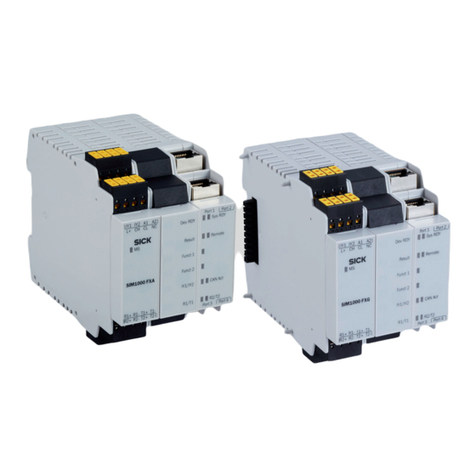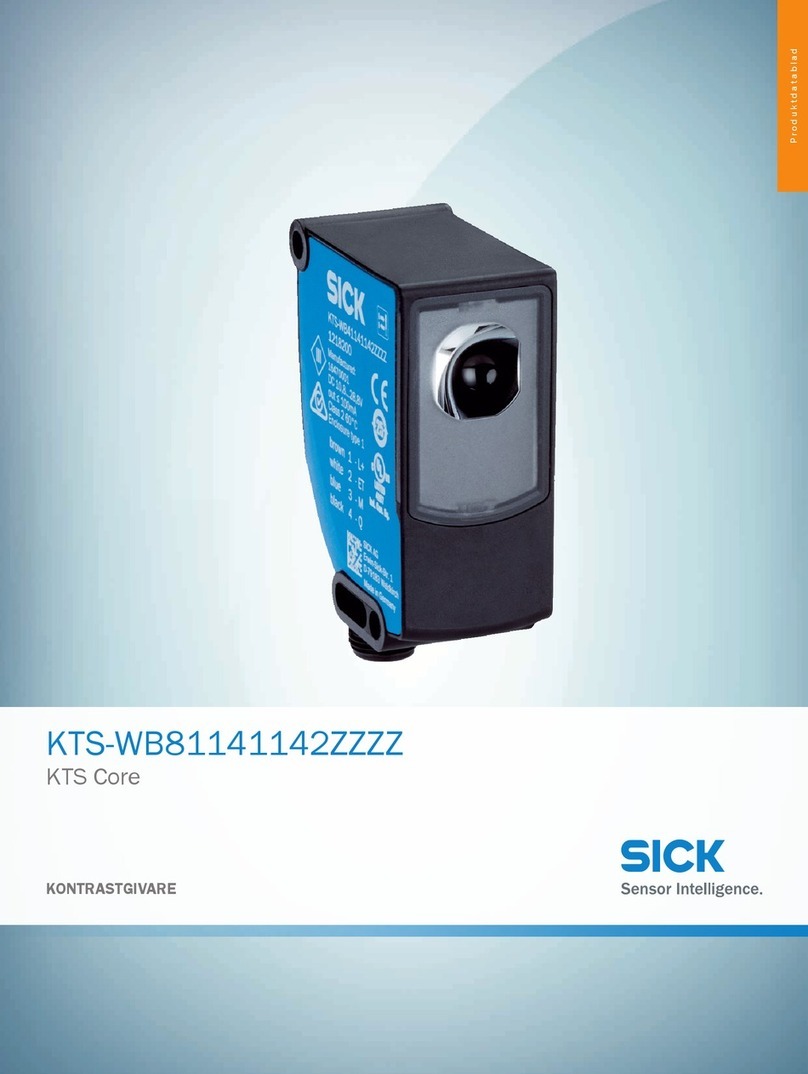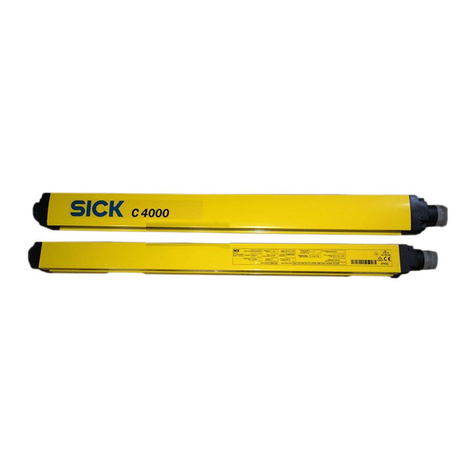
OPERATING INSTRUCTIONS en
Safe motor feedback systems
1 About this document
Please read these operating instructions carefully before using the safe motor
feedback system or mounting it, putting it into operation or servicing it.
This document is the original operating instructions.
1.1 Purpose of this document
These operating instructions provide technical personnel of the machine manu‐
facturer or the machine operator instructions regarding the safe assembly, electri‐
cal installation, commissioning, operation and maintenance of the safe motor
feedback system.
These operating instructions are to be made available to all those who work with
the safe motor feedback system.
Furthermore, planning and using safety-oriented sensors such as the safe motor
feedback system also requires technical skills that are not covered in this docu‐
ment.
The official and legal regulations for operating the safe motor feedback system
must always be complied with.
1.2 Symbols and document conventions
WARNING
A safety note informs you of real-world specifications for safely mounting and
installing the safe motor feedback system.
This is intended to protect you against accidents.
Read and follow the safety notes carefully.
NOTE
Indicates useful tips and recommendations.
bInstructions for taking action are indicated by an arrow. Carefully read and
follow the instructions for action.
1.3 Associated documents
•“HIPERFACE® Safety” implementation manual - 8014120, as of 12/2010 (or
newer)
•Hiperface® motor feedback protocol specifications - 8010701, as of 4/2008
(or newer)
2 Safety information
This chapter concerns your own safety and the safety of the system operator.
2.1 General safety notes
The national and international legal specifications apply to the installation and
use of the safe motor feedback system, to its commissioning and to technical
inspections repeated at regular intervals, in particular:
•Machinery Directive 2006/42/EC
•Work Equipment Directive 2009/104/EC
•Accident prevention regulations and safety regulations
•Any other relevant safety regulations
The manufacturer and operator of the machine on which the safe motor feedback
system is used are responsible for coordinating and complying with all applicable
safety specifications and regulations, in cooperation with the relevant authorities.
The manufacturer of the drive system connected must have complied with the
safety requirements for the drive system design described in the implementation
manual, “HIPERFACE® Safety” - 8014120.
2.2 Intended use
The safe motor feedback system is ideal for the dynamic and precise operation of
servo-control circuits due to its equipment.
The overall system, consisting of read head, measuring elements, evaluation sys‐
tem, servo inverter, and motor, forms a control circuit.
The safety-oriented use of safe motor feedback systems with a HIPERFACE® inter‐
face concerns application in combination with linear motors.
The following information can be derived from the digital position signals of a safe
motor feedback system connected directly to a motor shaft:
•(Rotational) speed information and commuting information in linear motors.
The safe motor feedback system can be used in conjunction with a drive system
in accordance with IEC 61800-5-2, in safety applications up to category 3 and PL
d in accordance with EN ISO 13849 or SILCL2 in accordance with EN 62061.
It fulfills the requirements of the Machinery Directive 2006/42/EC and provides
support for the drive system in ensuring:
•The safety functions, based on the safe position or speed information of the
safe motor feedback system.
•In the case of safety functions that are based on the safe absolute position,
the safe motor feedback system only supplies one channel without safety-
related diagnostics upon being switched on. A second channel must be
implemented by the user using other measures. This second channel can be
provided by the user by saving the position of the safe motor feedback sys‐
tem before switching it off and comparing it to the starting position of the
safe motor feedback system when switching it on the next time. Use for
absolute position safety-related purposes is possible only if the values
match. Otherwise, a reference run must be carried out by the user. Without a
second channel, a reference run must be carried out each time the safe
motor feedback system is switched on to confirm the absolute position.
The safe motor feedback system is not able to create a safe state for the drive
system independently. The drive system has to create the safe state as a
response to an error displayed by the safe motor feedback system.
The sensor signals are transferred to the evaluation system via a HIPERFACE®
interface. In combination with a drive system of category 3 (EN ISO 13849),
SILCL2 (EN 62061), or PL d (EN ISO 13849), the safe motor feedback system is
suitable for safety applications. If only the analog incremental signal outputs
(sine/cosine) are used for speed-based safety functions of the drive, the safe
motor feedback system meets the requirements in EN 61800-5-2.
The safe motor feedback system does not support any safety-related operating
modes in the context of an absolute position.
To detect all impermissible changes in the relationship between sine and cosine,
vector length monitoring is used. For the TTK50S/ TTK70S, the vector length
must not deviate by more than max. +/- 15% (see chapter 6.2. “HIPERFACE®
Safety” implementation manual - 8014120).
A deviation that is greater than +/-15% indicates a violation of the vector length
limits. The drive must respond to the error accordingly.
WARNING
The safe motor feedback system may be used only within the limits of the
prescribed and specified technical data, dimensions and tolerances of the
dimensional drawings and operating conditions, and the specified tightening
torques must be complied with.
If used in any other way or if alterations are made to the device – including in
the context of mounting and installation – this will render void any warranty
claims directed to SICK STEGMANN GmbH.
2.3 Improper use
The safe motor feedback system must only be used with a defined mounting kit
(2105618). The connection between the drive system and the safe motor feed‐
back system must have a rigid design.
The safe motor feedback system cannot support safety functions that are based
on the absolute position, which is transmitted to the RS 485 parameter channel,
without additional measures.
The mechanical coupling of the measurement system to the drive is relevant to
safety. Standard EN 61800-5-2, table D16, requires fault exclusion here concern‐
ing the release of the mechanical connection between the measurement system
and the drive. The specifications for mounting the measurement system must be
observed.
If such stimulations cannot be reliably ruled out in the application, suitable tests
must be carried out for the entire drive system.
2.4 Requirements for the qualification of personnel
The TTK50S/TTK70S safe motor feedback system may be mounted, put into
operation, checked, maintained, or used only by qualified safety personnel.
Safety personnel is qualified when the following requirements are fulfilled:
•Appropriate technical training of the personnel
•Instruction of the machine operator in machine operation and the applicable
safety guidelines
•Access to these operating instructions
3 Project planning
WARNING
The supply voltage must be generated from PELV systems (EN 50178). The
safe motor feedback system conforms to protection class III in accordance
with EN 61140. If the supply voltage is not generated from PELV systems, the
user must take other measures to ensure safe disconnection for live parts.
4 Mounting
This chapter describes the mounting of the safe motor feedback system.
4.1 Safety
NOTE
Mounting must only be done in accordance with the specified IP enclosure
rating (see technical data).
If applicable, the system must be protected from damaging environmental
influences such as spray water, dust, impacts and temperature.
NOTE
Impacts or shocks must be prevented when mounting the safe motor feed‐
back system.
NOTE
The safe motor feedback system must only be used with a defined mounting
kit (2105618 / 2109583). An acceleration of < 100 m/s² is permitted (see
EN 61800-5.2, table D16).
WARNING
The influence of magnetic fields must be avoided. In particular, magnet fields
(e.g. holding magnets or other permanent magnets) must not come into
direct contact with the magnetic tape.
•External magnetic fields > approx. 3 ... 4 kA/m (3.8 ... 5 mT) influence
the measurement accuracy.
•Field strengths > 150 kA/m (> 190 mT) irreversibly change the magneti‐
zation of the magnetic tape.
8023821/14W8/2019-07-10/de, en, es, it, fr TTK50S/TTK70S | SICK 6
